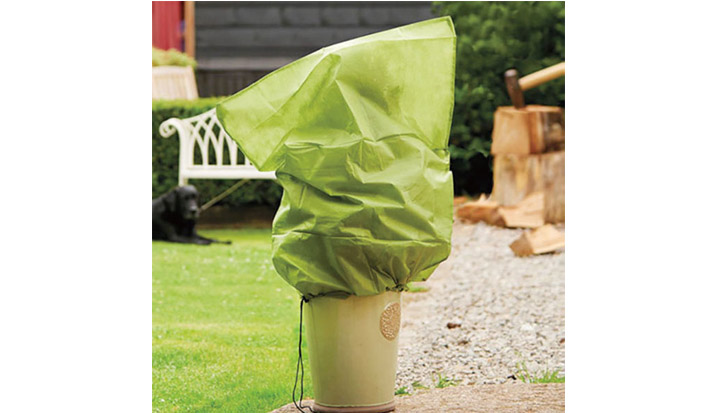The raw material of the non-woven fabric is polypropylene and the raw material of the plastic bag is polyethylene. The chemical molecular structure of the polyethylene has relatively strong stability and is extremely difficult to degrade, so the plastic bag takes 300 years to be decomposed; The chemical the structure is not strong, the molecular chain can be easily broken, so that it can be effectively degraded, and enter the next environmental cycle in a non-toxic form and a non-woven bag can be completely decomposed within 90 days.

Spun Bond Non Woven Fabric
Spun Bond Non Woven Fabric is a method in which the filaments are laid into web after the polymer has been extruded and stretched to form continuous filaments, and the web is then subjected to self-bonding, thermal bonding, chemical bonding or mechanical reinforcement. The web becomes a non-woven fabric.
Characteristics of spun-bonded nonwovens:
1. The web consists of continuous filaments.
2. Excellent tensile strength.
3. There are many process changes, which can be reinforced by various methods.
4. The filament has a wide range of fineness.
Product application of spun-bonded nonwovens:
1. Polypropylene (PP): geotextile, tufted carpet base fabric, coated base fabric, medical material, coated material for disposable products.
2. Polyester (PET): filter material, lining material, tufted carpet base fabric, agricultural materials, packaging materials, etc.
The hydrophilic nonwoven fabric is one type of nonwoven fabric and the hydrophilic nonwoven fabric and the waterproof nonwoven fabric are the opposite. The hydrophilic nonwoven fabric is a hydrophilic nonwoven fabric which is obtained by adding a hydrophilic agent to a nonwoven fabric or producing a hydrophilic agent on the fiber.
Hydrophilic Nonwoven Fabrics are mainly used in sanitary products such as diapers, disposable diapers, and sanitary napkins to provide rapid penetration and keep dry and comfortable. It can be said that the application of hydrophilic non-woven fabrics can be seen everywhere, and then Spun Bond Non Woven Fabric Manufacturer will tell you about the main application of hydrophilic non-woven fabrics.
1. Infants and young children are not wet
The upper and lower surfaces of the diaper absorbing layer of the infant are made of a hydrophilic non-woven fabric, so that the diaper-free surface has a softness like a cloth, and has a good water-absorbing effect.
2. Adult diaper
The effect of hydrophilic non-woven fabric in an adult diaper is basically the same as that of infants and young children. In comparison, the preparation of hydrophilic non-woven fabric in adult diapers is lower than that of infants. .
3. Mask
A better quality mask will create a layer of hydrophilic nonwoven in the inner layer of the mask to absorb the water vapor exhaled from the mouth. The more intuitive effect is that in winter, we often see that some friends wearing glasses will form a layer of white water vapor on the glasses when wearing a mask, which greatly affects the line of sight. This is because there is no hydrophilic nonwoven in the mask.
4. Pet pad
The pad used to prevent pets from urinating at the pet's rest is also made of hydrophilic non-woven fabric. The hydrophilic nonwoven fabric is relatively simple to manufacture and has a relatively low standard, mainly highlighting its hydrophilic function.